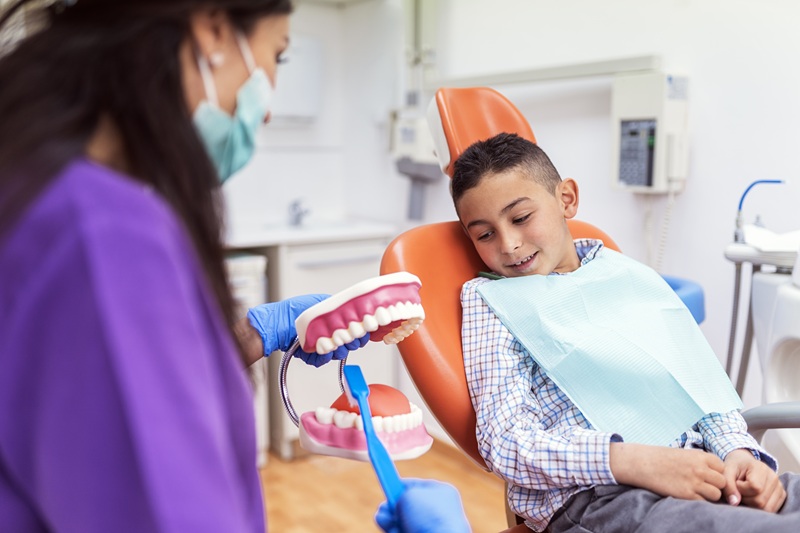3 Dentist-Approved Tips to Keep Your Child’s Teeth Healthy for Life

When it comes to raising healthy, happy kids, it’s easy to focus on nutrition, sleep, and screen time, but there’s one area that often gets overlooked: their teeth. And yet, good oral health in childhood lays the foundation for a lifetime of strong, healthy smiles.
At Whitehorse Dental, we often see young patients with preventable dental issues like early decay, gum irritation or even enamel wear that started with small actions that became habits formed at home.
The good news about these issues is that they can be avoided with just a few simple tweaks to your child’s daily routine. Here are our top 3 dentist-approved tips on keeping your child’s teeth healthy without stress or confusion.
1. Limit Snacking and Create Food-Free Windows
Does your child seem to snack all day long? While eating snacks might seem harmless (or even healthy), it could be doing more harm to their teeth than you think.
Why Snacking Can Hurt Their Teeth
Every time your child eats, especially foods with natural or added sugars, the bacteria in their mouth produce acid. This acid softens and weakens enamel, which increases the risk of decay. This means the more frequently your child eats, the more often their teeth are under attack.
Now, it should also be understood that the enamel on children’s teeth is softer than adult teeth. They are even more vulnerable to repeated acid exposure, especially from sugary snacks, fruit, juice, and starchy foods like crackers or cereal.
Solution: Create Meal Windows
Instead of constant snacking, try to structure your child’s day into 4 to 5 eating sessions (breakfast, morning tea, lunch, afternoon tea, and dinner), with “food-free windows” in between where only plain water is allowed.
These breaks give the mouth time to neutralise acids and allow teeth to naturally repair early signs of damage, which is a process called remineralisation.
Dentist’s Pro Tip: Keep each mealtime under 40 minutes. After that, pack up the food, finished or not, and wait for the next mealtime. If your child is hungry, that’s okay. They’ll eat more at the next session.
This routine not only protects their teeth but helps kids learn to listen to their body’s hunger cues.
2. Choose Whole Fruits Over Juice or Dried Fruit
We all know how healthy fruits are to our body, but not all fruit forms are equal when it comes to protecting little teeth.
Whole Fruit Wins
Whole, fresh fruit contains natural sugars, but also water, fibre, and a satisfying texture that slows down eating and supports digestion. When your child bites into an apple or peels a mandarin, the sugars are released gradually and saliva helps rinse them away.
What About Juice and Dried Fruit?
While juice and dried fruit are often marketed as healthy options, they can wreak havoc on young teeth.
- Fruit Juice: Just one glass of fresh orange juice can contain the sugar of 7–8 oranges. That’s far more sugar than your child would eat in one sitting, and because it’s liquid, it floods the entire mouth and lingers in the grooves of the teeth.
- Dried Fruit: Dried fruit like sultanas and dried apricots are over 60% sugar and very sticky. That sticky residue clings to teeth long after eating, feeding bacteria and increases decay risk.
Dentist’s Pro Tip: If your child loves fruit, that’s great! We recommend that you let them stick to eating whole fruit most of the time, and save juice or dried fruit for occasional treats. A fresh apple or banana is far less damaging than a handful of dried mango or a juice box.
3. Brush at Night with Adult Toothpaste
Many parents are surprised to hear this (and you might be too), but when it comes to toothpaste, stronger is better even for your kids. The key is to use the right amount.
Why Fluoride Matters
Not everyone knows about this, but a toothpaste’s main job is not to clean because that’s the toothbrush’s job. Toothpastes help strengthen the enamel and make it more resistant to acid attacks because of fluoride, which is the active ingredient in most toothpastes.
Most children’s toothpastes in Australia contain very low fluoride levels, especially those labelled for ages under 6. Unfortunately, these are not strong enough to effectively protect their soft enamel.
Here’s what we recommend:
- Use adult-strength toothpaste (1000+ ppm fluoride) when they brush at night.
- Use a tiny amount of it—about half a grain of rice.
- Brush especially at night when the mouth is dry and vulnerable to acid attack.
- Ask your child to spit afterwards, but don’t rinse. Leaving a thin layer of fluoride on the teeth overnight helps harden enamel while they sleep.
In our clinic, we believe that a tiny amount of the right toothpaste is far better than a large blob of a weak one. If you want to instill good habits that can keep their teeth healthy for the long-term, try to get them used to adult toothpaste, even if it’s only at night.
Healthy Teeth Start with Small Daily Habits
You don’t need fancy toothbrushes or expensive toothpaste to protect your child’s smile. What matters most are daily habits through structured eating times, smart food choices, and proper brushing with the right toothpaste.
It’s these small things that make the biggest difference over time, especially when done consistently.
Our team at Whitehorse Dental is here to support families with clear advice and gentle care. Whether it’s your child’s first dental visit or their tenth, we can help you build simple habits that keep their teeth strong, their breath fresh, and their smile healthy for life.


